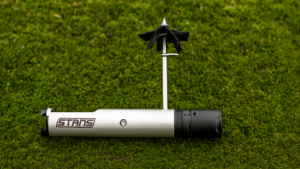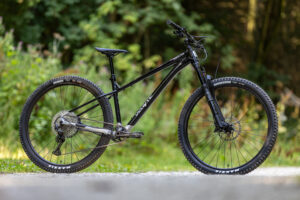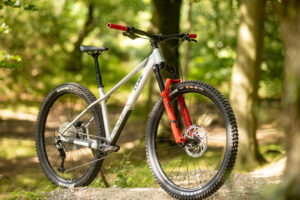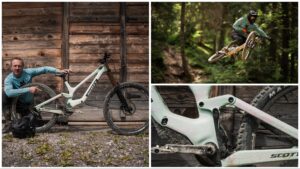Get the perfect blend of power and agility with one of the best sub-20kg e-bikes.
While the best e-bikes are an absolute blast off-road, they are not for everyone. Some riders want do the lion’s share of the work on the climbs, and others don’t want to give up the sheer dynamic handling of their analogue rigs. If you’re one of those people, then a lightweight e-bike could be for you. Here’s our pick of the crop.

The Pivot Shuttle SL 29 XTR was our 2023 MBR Lightweight Electric Mountain Bike of the Year
1. Pivot Shuttle SL 29 Team XTR
The best lightweight electric mountain bike
Frame: Carbon Hollow Core, 132mm travel | Motor: Fazua Ride 60 60Nm/450W | Battery: Fazua Energy 430Wh integrated | Weight: 18.47kg | Rating: 9/10
Reasons to buy:
- Very dynamic handling
- Low resistance, high power Fazua motor feels great on or off
- Integrated 430Wh battery boosts range
- Shimano XTR drivetrain and brakes reduces weight without compromising performance
- Sag indicator is really useful
Reasons to avoid:
- EXO casing tyres are too thin for a bike this capable
- Can’t remove the battery for charging
- Slight delay in the motor when reengaging after overrun is complete
- Handlebar mounted controller feels fragile
Pivot was one of the first brands to release a lightweight trail bike with the latest Fazua Ride 60 motor, and it set the bar very high. So high we awarded it our 2023 E-Bike of the Year award in the Lightweight category. Key to winning that accolade is the infectious ride quality, that encourages skilled riders to extract the maximum fun from every trail. There’s no slack in the system – with minimal travel you have to be on your best game – but the Shuttle SL amplifies every ride.
Fazua’s Ride 60 system feels punchy in the top Rocket mode, but still delivers the best range of all the lightweight motors we tested. Over 1,000m of climbing in Rocket. So the lack of a range extender isn’t really a problem, even though it’ll be tough turning down one more run when the red light starts blinking.
Read the full review for the Pivot Shuttle SL 29 Team XTR
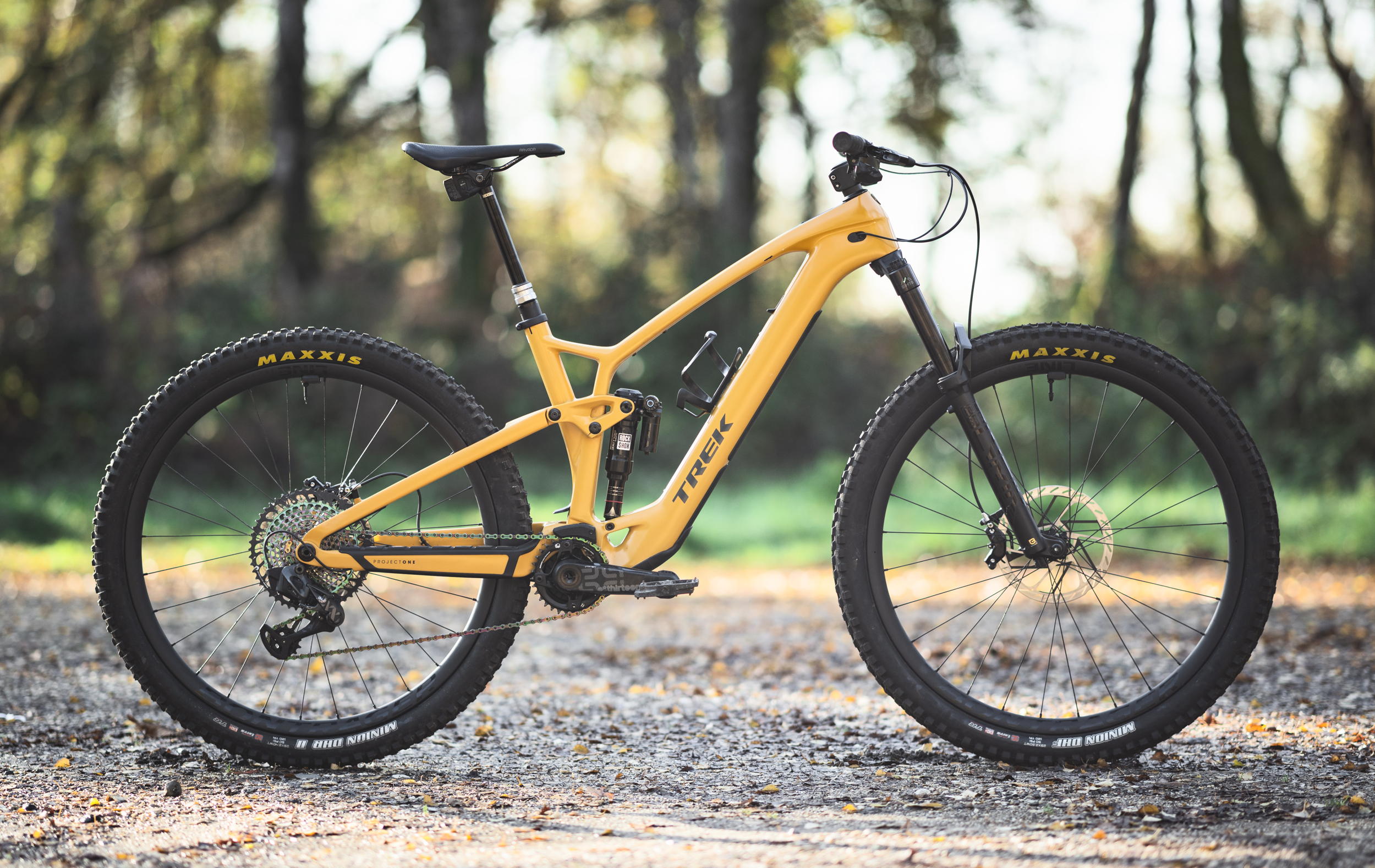
We loved the silent ride and adjustable geometry of the Trek Fuel EXe
2. Trek Fuel EXe
Quietest lightweight e-bike
Frame: OCLV Mountain Carbon, 140mm travel | Motor: TQ 50Nm/300W | Battery: TQ 360Wh removable | Weight: 19.1kg | Rating: 8/10
Reasons to buy:
- Great geometry and sizing
- Handling blurs the line between enduro and trail riding
- TQ motor is easily the quietest to date
Reasons to avoid:
- Shock tune is a little too firm in compression
- BITS tool rattles in the steerer tube
- Would benefit from a front tyre with a more pronounced edge knob
When we first rode the Trek Fuel EXe, most riders we passed on the trail thought it was an analogue bike – so quiet the motor, and stealthy the integration. Yes, the TQ HPR 50 is almost silent most of the time, and the compact dimensions mean the Fuel EXe looks as good as the most handsome analogue bikes. Yet you can still slide the 360Wh internal battery out of the bottom of the down tube to charge.
The motor doesn’t have the most power or torque, so the assistance is more of a light touch than a forceful shove, but it all feels very natural on the trail. Like analogue riding, just faster. And Trek’s chassis is cutting-edge, with sharp lines, robust dimensions, and modern geometry with the benefit of various flip-chip adjustments so you can get it just right. Our only reservations are the lack of range from the smaller battery, and the damping on the top end model we tested was over-bearing, so the bike wasn’t as lively as we’d hoped. But that may be different elsewhere in the range.
Read our full test review of the Trek Fuel EXe

The Specialized S-Works Turbo Levo SL 2 is one of the lightest e-bikes we’ve tested
3. Specialized S-Works Turbo Levo SL
Best lightweight e-bike for adjustability
Frame: Fact 11m carbon, carbon shock extension, 150mm travel (152mm measured) | Motor: Specialized SL 1.2, 50Nm/320W | Battery: Specialized SL 320Wh 48V integrated | Weight: 17.65kg | Rating: N/A
Reasons to buy:
- More sizes, more adjustability, more travel, more support from the suspension, more power and more torque than before
- Same price, same weight
- 160Wh range extender included with S-Works bike
Reasons to avoid:
- Rear suspension isn’t as plush as before
- It’s still a ton of money
Specialized was at the forefront of lightweight e-bike development with the first Turbo Levo SL, using the Stumpjumper as a base and adding a compact motor and battery to the mix from its Turbo Creo road bike. This updated version gets the aggressive and adjustable geometry from the acclaimed Stumpjumper Evo along with a modest increase in power and torque to bring it in line with the likes of TQ, Fazua, and Bosch. It’s a really lightweight bike, comfortably under 18kg with a spec that doesn’t play silly games to cheat the weigh-in.
The new geometry really helped us hustle the new Turbo Levo with more confidence on enduro trails, but the suspension is not quite as plush as the old bike. Even if it pedals better. We appreciated the extra power and torque from the motor, but given that the battery size hasn’t changed, the range isn’t quite as good as it used to be. Having said that, there is a useful range extender to fall back on, and the ride quality is right up there with the best lightweight e-bikes.
Read our test review of the Specialized S-Works Turbo Levo SL

The want factor is high with the luscious Transition Relay
4. Transition Relay
The lightweight eMTB gets an upgrade
Frame: Carbon, 160mm travel | Motor: Fazua Ride 60, 450W/60Nm | Battery: Fazua Energy InTube 430Wh | Weight: 19.8kg | Rating: N/A
Reasons to buy:
- Hilariously fun to ride
- Lightweight and with a normal bike feel
- Twinned with a powerful and adaptable motor that’s a joy to use
- Available in six sizes
Reasons to avoid:
- Noisy
- Tendency to eat its own spider
- Needs a chain guide
Transition hopes the Relay is the bike that convinces diehard analogue riders to make the switch to electric. And given how fun it is to ride, we’d say the US brand has every chance of succeeding. We were certainly smitten when we tested it. In fact, we said riding it is “like being at a rave – senses overwhelmed, you’re carried forward on a rush of emotion, vitalised to try moves like never before”. An intoxicating drug then. And an expensive one, it has to be said.
With the Fazua motor and internal battery we could get over 1,000m of climbing in Rocket mode, and for every inch of it we were a gurning, grinning, whooping mess. Downsides? Well apart from the aforementioned price, the lack of a chainguide and an annoying rattle from inside the frame. At least your whoops of joy will drown out most of the noise!
Read our test review of the Transition Relay

Haibike’s Lyke CF11 is great value and offers an innovative packaging solution for the Fazua motor
5. Haibike Lyke CF11
Great value lightweight e-bike
Frame: Carbon, 140mm travel (137mm measured) | Motor: Fazua Ride 60, 450W/60Nm | Battery: Fazua Energy InTube 430Wh | Weight: 19.17kg | Rating: N/A
Reasons to buy:
- Clever chassis design
- Doesn’t look like an e-bike (or a Haibike)
- Good power and range
- Removable battery
- Fast, rewarding handling
- Good value
Reasons to avoid:
- Firm suspension won’t suit everyone
- Tall seat tube
- Twangy wheels
- Tyres are focussed on speed rather than grip/stability
- Could do with a flip chip to lower the BB
The Haibike Lyke is much more conventional-looking than most bikes from the brand. In fact we think it looks pretty good – like a traditional analogue bike. And Haibike has also done a great job of making the Lyke handle like a regular analogue bike. Maybe better thanks to the centralised mass of the motor and battery. Of which the former is cleverly mounted into the base of the seat tube, while the latter is removable by sliding out the base of the down tube. These changes have created a bike that’s super fast on flowing singletrack, keen to change direction, and easy to manual.
A few of the components could be improved – the Mavic wheels flexed under hard cornering, and the saddle was brutally uncomfortable – but as an overall package for fast trails, there’s a lot to Lyke. And it’s even decent value.
Read our test review of the Haibike Lyke CF11

The Specialized S-Works Turbo Kenevo SL has all the composure of an enduro bike on the descents, and lets you fly up the climbs like an XC racer
6. Specialized S-Works Turbo Kenevo SL
All the agility of an enduro bike with helping hand on the climbs
Frame: Carbon, 170mm travel | Motor: Specialized Turbo SL 2.2, 50Nm/320W | Battery: Specialized 320Wh | Weight: 18.79kg | Rating: 8/10
Reasons to buy:
- Can hang with the best enduro bikes on the descents and leave them for dead on the climbs
- Unobtrusive motor accentuates the positives
- Six unique geometry settings
Reasons to avoid:
- Battery can’t be removed easily
- Limited seat post insertion
- It’s a decent deposit on a house
Specialized’s highly regarded Enduro gets a lightweight motor and battery and the result is more than the sum of its (not inconsiderable) parts. Agile and powerful, every turn, every jump, every drift, every burst of acceleration – and they come thick and fast – felt natural and familiar on the Kenevo SL, yet also somehow more intense and satisfying than either a pure analogue bike or a full power e-bike could deliver.
It inspired us to give more and it gave me more back in return. Every joule of energy we invested turned to profit – more speed, more control, more engagement, more fun. We really don’t want to be this gushing about a push bike that costs twelve and a half grand, but it’s everything we hoped for and more. And now the 2024 model comes with the upgraded motor with extra power and torque, so you can rally the climbs as well as the descents.
Read our full test review of the Specialized S-Works Turbo Kenevo SL

The Forestal Cyon is an innovative design but lacks range
How we test
Like all bikes we test, these lightweight e-bikes were all weighed and measured in our workshop, so all the facts and figures are real world, not off the CAD screen of a brand. We also measure the actual vertical wheel travel to see if that measures up. For comparative group tests, we always fit control tyres, as this creates a level playing field for handling, weight, range, and geometry. Talking of which, we range test our e-bikes on full power until the bike goes into limp mode, then continue riding until the battery completely goes flat. You can see the results for our contenders further down the page.
What to look for in the best lightweight e-bike
A lightweight e-bike has to have a significant weight difference compared to a full fat model to make sense. That usually means a smaller, lighter, less powerful motor and a battery with fewer cells. Less power and less battery capacity means you have to put in more effort to achieve the same range, although less friction in the motor and less mass to move around should offset some of that extra human input.
How much should a lightweight e-bike weigh?
In our view, a full-suspension e-bike should come in under 20kg to be considered lightweight. Anything around 16kg is extremely light, but be careful to check that components, like wheels and tyres, have not been compromised in the quest for a headline weight. Too many times we have ridden bikes built to win the lightweight crown that have not been fit to take anywhere rougher than a dirt road.

Mondraker’s Neat RR is a really agile trail bike with a quiet TQ motor
How much power can I expect from a lightweight e-bike?
It stands to reason that a lightweight e-bike will have less power than a full fat model. Why? Well, a significant chunk of weight on an e-bike comes from the battery, so to make the bike lighter, they usually come with a smaller battery. To extend the range of a smaller battery, you need to drain it more slowly, so the motor needs to draw less power from it. So motors will have less power. Also, less powerful motors can be made lighter and smaller, which helps overall weight and packaging. Some even have less drag, so pedal almost as efficiently as an analogue bike.
In terms of numbers, peak power (the power you feel at higher revs on more gradual gradients) will be between 300-600w. Torque (what you feel at low revs and on steeper gradients) usually sits between 50-60Nm. Compared that to full-fat motors that all have around 85Nm of more torque, and around 600W peak power.
In our experience, 50Nm of torque is enough on a lightweight e-mtb, and while peak power is less important, 300w is also sufficient when combined with a sub-20kg bike and an efficient, low-friction motor.

The Transition Relay just loves to shred the descents
What about range?
For an idea of relative range, we put four popular lightweight e-bikes in max power mode, be that boost, Rocket, level 3 or Nitro. We then rode the same test loop where the bikes were fitted with the same tyres, ridden in the same conditions, by the same rider. The results were surprisingly different though. The loop consisted of one steep technical climb, two fireroad climbs and a few Tarmac climbs, depending on the bike. We recorded time and elevation to limp mode, typically 10% battery life, then rode until the lights went out.

Pivot Shuttle SL V Levo SL V Forestal V Trek Fuel EXe range comparison
Probably the most telling metric of all is the number of trails ridden. On the Pivot shuttle SL we completed 7 descents, which is almost double that of the Forestal. We also used the estimated calorie burn as a proxy for effort, where the calories burned per metre for elevation gives a good indication of rider input on each bike. The Specialized Levo SL required the most rider input, the Forestal Cyon the least.

The Fazua Ride 60 on the Haibike Lyke CF11 has the best range of any lightweight system we’ve tested
What are the pros and cons of a lightweight e-bike?
The best things about lightweight e-bikes are that they closely mirror the handling of their analogue cousins, so you can throw them into corners and pop them over obstacles with much less energy than a full power e-bike. They’re more natural to ride, some would even say more fun to ride. You can’t rely on the strength of the motor to get you up the climbs. So in that way they still require a good level of fitness.
On more mellow trails, it’s much easier to pedal above the 15.5mph speed limiter, so they are still engaging on fast, flowing singletrack. In that sense they work better as trail bikes than full-fat e-bikes, which are biased towards enduro, winch-and-plummet laps. Less weight means less wear and tear on components, and if you’re a smaller, lighter rider who finds a 23kg e-bike too heavy to muscle around, then a lightweight e-bike will be much more manageable.
Where lightweight e-bikes make less sense is when you’re riding with a crew of full-fat e-bikers. You will have to work very hard, in a low power mode, to match their speed and range. And with smaller batteries, you can’t expect to go quite as far on a single charge, either. A range extender will help, but it will also add weight, bulk, and reduce carrying capacity for water. Finally, in the winter months when the trails are muddy and tough going, a diet e-bike won’t drag you through the mire as well as a full-power option.










